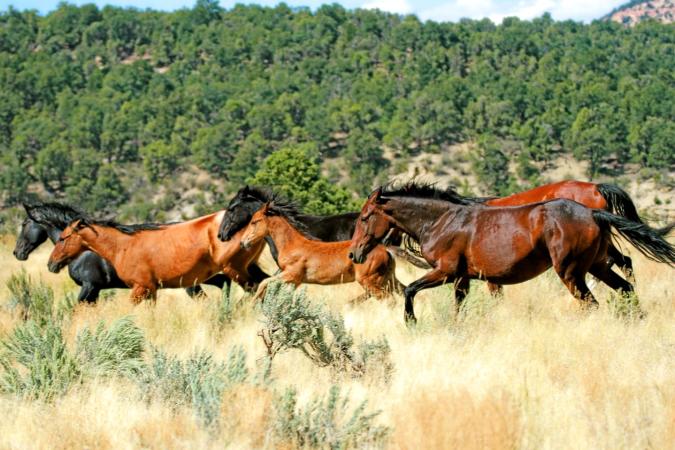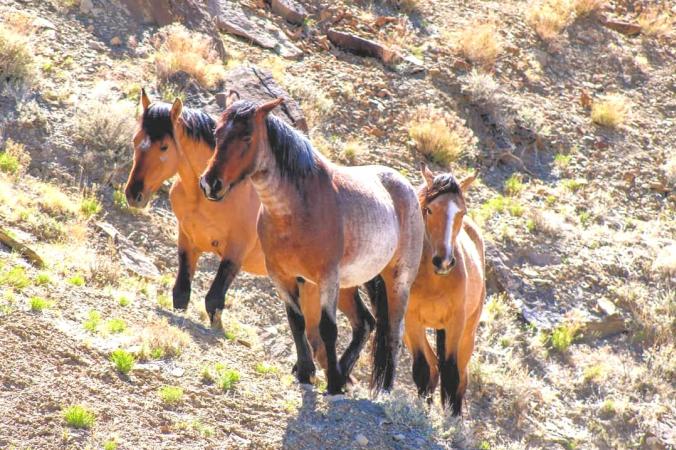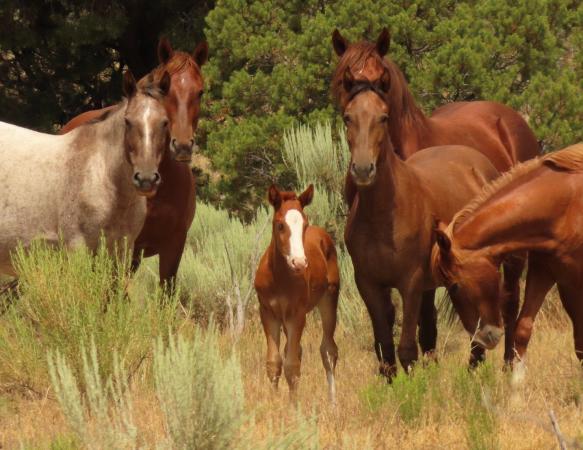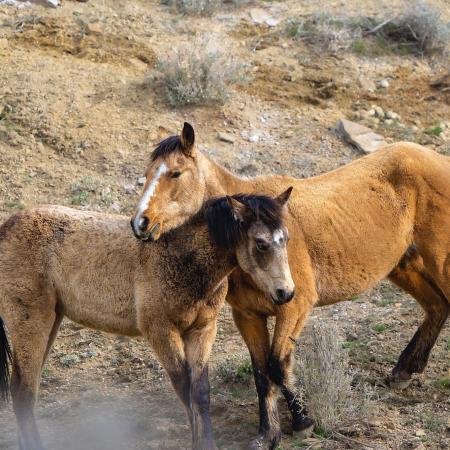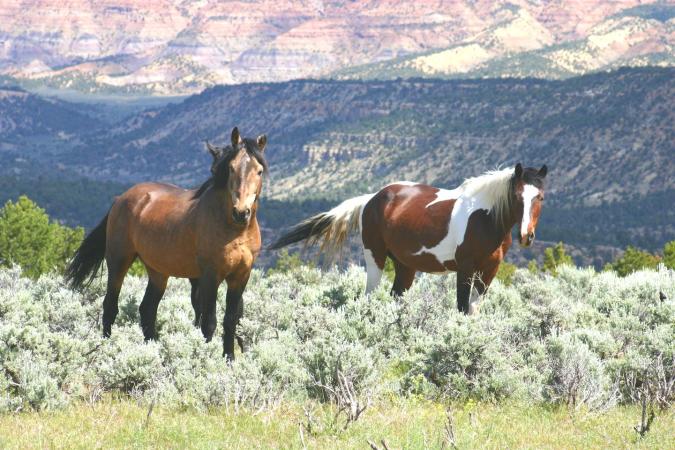Powerful, Graceful and Free to Roam - The Wild Horses of Grand Junction
There are very few things that are as iconic and symbolic of the American West as Colorado wild horses. Seeing these magnificent creatures roaming free is truly an experience of a lifetime.
Little Book Cliffs Wild Horse Range, located just outside of Grand Junction, is a 36,000-acre preserve that is one of only three wild horse sanctuaries in the entire country designated to protect wild horses. Over 100 horses roam the area, providing excellent opportunities to view and photograph them. Palominos, paints, bays, sorrels, and even appaloosas fill the landscape of this rugged terrain. In addition to the wild mustangs, other wildlife such as turkey, quail, bighorn sheep, mule deer, elk, and eagles roam this land. The horses are not overly skittish as they are used to people visiting them.
Visitors drive to Coal Canyon Trailhead and from there hike or horseback ride on the Main Canyon Trail. From Grand Junction, traveling east, take I-70 to Cameo Exit 45. Although hiking and mountain biking is allowed year-round, road access to the trailhead is closed December 1 – May 1, to protect wintering wildlife and foaling areas.
During spring, the wild horses can often be seen not far from the trailhead. Although there is no guarantee of wildlife sightings – that’s the fun of it - generally within an hour of hiking during May - June, you can spot these grand creatures in all of their freedom. As the summer season approaches in July and August, you likely will still see them; however, you may have to venture down the trail a little further.
The Legacy
Wild mustangs are a beautiful reminder of American history and a gift that provides us a glimpse into the true legacy they represent. Horses are marvelous creatures, and while it is common to see domesticated horses, it is much rarer to view them roaming wild and free. This is synonymous with the adventurous spirit that lives on in Grand Junction.
The Little Book Cliffs Wild Horse Range is managed for multiple uses, but wild horse habitat is the primary reason. It is one of only three wild horse preserves in the nation with the goal to protect these free-roaming horses. This 36,113-acre range protects over 100 wild horses who roam the rugged landscape just eight miles northeast of Grand Junction behind the Book Cliff range. The Book Cliffs is the largest continuous cliff face in the world, so the scenery, aside from the equines, is magical.
Traveling in bands of up to a dozen horses, they traverse the high plateaus lush with sagebrush and pinon-juniper, which provide perfect pastures for grazing in Grand Junction’s pleasantly temperate climate. The area is untouched, so it greets you with a sense of solitude and peaceful silence only interrupted by the sounds of nature.
History of Grand Junction's Wild Horses
During the ice age, ancestors of the modern horse roamed the North American continent. They were smaller than today's horses and became extinct more than 10,000 years ago. Spaniards who explored and settled this area reintroduced horses to the continent in the 1500s. These horses were known as “mustanos,” and those who escaped formed the early wild herds that were later called mustangs.
In the mid-1980s, a Grand Junction group, called Friends of the Mustangs, began working with the Bureau of Land Management (BLM) to ensure that both the range and the horses were protected and kept healthy. They track horse populations, locations, genetic diversity, and range conditions. For more information about Friends of the Mustangs, click here.
Tips for Spotting Wild Horses
The conservation area is open year-round. Of course, there is no way of guaranteeing you will see any wild animal in nature, but we do have some tips to improve your chances of success.
Spring and early summer are the ideal times to visit Grand Junction in search of these spirited giants. They tend to roam at the lower elevation, near the flowing streams, as the temperatures are still mild. The mares also give birth during this time of year, so seeing young foals is another benefit of visiting during spring. After seeking higher ground during the summer months, they return to lower elevations, once again, in the fall. The best place to see the horses is usually on Coal Canyon Trail just outside of Grand Junction.
Getting to the Little Book Cliffs
From Grand Junction, travel east on Interstate 70 to the Cameo Exit 45. Turn off the freeway and travel under the interstate. Then continue east before crossing the Colorado River in front of the Cameo Shooting and Education Complex. Continue past the complex and follow the Bureau of Land Management signs to the Little Book Cliffs Wild Horse Area and Coal Canyon Trailhead. It’s 2.2 miles from the interstate on a dirt road that leads behind Mount Garfield. Though hikers and horseback riders are welcome year-round, the gate is locked from December 1 through May 1 to protect wintering wildlife and foaling areas.
Where to Stay
Photo: Hotel Maverick
There are 34 affordable lodging options (hotels, motels, and B&Bs) in Grand Junction to suit a variety of travel budgets, plus vacation rentals and campgrounds. You’ll also find exceptional dining and activities during your visit and beautiful weather year-round!
For more ways to enjoy the public land around Grand Junction, check out page 26 of the Grand Junction Adventure Guide.



